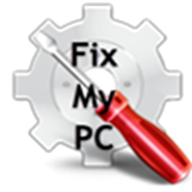
Are you upgrading to a new computer but dreading the process of transferring all your programs and files? Don’t worry, you’re not alone.
Many people find this task daunting and time-consuming.
However, with the right strategies, transferring programs from an old computer to a new one can be a smooth and efficient process.
In this article, we will provide you with expert tips and tricks on how to transfer your programs without any hassle.
From backing up your data to using specialized software, we will cover all the essential steps to ensure a successful transfer.
Whether you’re a tech-savvy individual or a novice user, these strategies will help you transfer your programs and files effortlessly.
By following these guidelines, you can save valuable time and avoid the frustration of losing important data during the transfer process.
So, without further ado, let’s dive in and learn the most efficient strategies for transferring programs from an old computer to a new one.
Prepare your old computer properly.
When upgrading to a new computer, it is crucial to prepare your old computer properly to ensure a smooth transition.
Start by backing up all your important files and documents to an external storage device or cloud-based service.
This will ensure that you don’t lose any valuable data during the transfer process.
Additionally, it is important to uninstall any unnecessary programs and applications from your old computer to free up disk space and improve performance.
Remove any personal information or sensitive data from the computer, ensuring that your privacy is protected.
Finally, make sure to properly clean the computer both internally and externally to remove any dust or debris that may have accumulated over time.
By following these efficient strategies for transferring programs from an old computer to a new one, you can ensure a seamless and organized transition to your new device.
Make a list of programs.
To efficiently transfer programs from your old computer to a new one, it is recommended to make a comprehensive list of all the programs you currently have installed.
This list will serve as a reference during the transfer process, ensuring that no essential programs are left behind.
Start by accessing the control panel or settings menu on your old computer and navigate to the “Programs and Features” or “Apps and Features” section.
Here, you will find a list of all the installed programs on your computer.
Take your time to go through the list and note down the names of the programs that you use frequently or deem necessary for your work or personal needs.
Additionally, consider any specialized software or applications that may require specific installation steps or licensing agreements.
By creating a comprehensive list of programs, you can streamline the transfer process and ensure that all your essential software is successfully installed on your new computer.
Determine compatibility with new PC.
Before transferring programs to your new computer, it is crucial to determine their compatibility with the new system.
Not all programs may be compatible or function optimally on different operating systems or hardware configurations.
To ensure a smooth transition, start by researching the system requirements of each program on your list.
Visit the official websites or documentation of the software to check if they are compatible with your new computer’s operating system version and hardware specifications.
Pay attention to factors such as processor type, RAM requirements, and available storage space.
If any of the programs are not compatible, you may need to seek alternative software or consider virtualization options to run them on your new PC.
By determining compatibility beforehand, you can avoid potential issues and ensure that your programs will run seamlessly on your new computer.
Utilize a transfer cable.
To efficiently transfer programs from your old computer to a new one, you can utilize a transfer cable.
A transfer cable allows for a direct connection between the two computers, enabling you to transfer files and programs quickly and efficiently.
By following the instructions provided with the transfer cable, you can establish a connection between the old and new computers.
Once connected, you can then initiate the transfer process, selecting the programs you wish to move to the new computer.
The transfer cable ensures a secure and reliable transfer of files, minimizing the risk of data loss or corruption.
With this efficient strategy, you can seamlessly transfer programs from your old computer to your new one, saving you time and effort in the process.
Use cloud storage to transfer.
Another efficient strategy for transferring programs from an old computer to a new one is to utilize cloud storage.
Cloud storage provides a convenient and accessible platform for storing files and programs remotely.
By uploading the programs from your old computer to a cloud storage service, such as Google Drive or Dropbox, you can easily access and download them onto your new computer.
This method eliminates the need for physical transfer devices and allows for a seamless transfer process, regardless of the distance between the two computers.
Additionally, using cloud storage ensures that your programs are securely stored and can be accessed from any device with an internet connection.
By leveraging the capabilities of cloud storage, you can transfer programs efficiently and effortlessly as part of your overall strategy for transitioning to a new computer.
Consider using an external drive.
One efficient strategy to consider when transferring programs from an old computer to a new one is the use of an external drive.
An external drive provides a reliable and portable solution for moving your programs and files between computers.
By connecting the external drive to your old computer, you can transfer the programs from your old computer onto the drive.
Once the transfer is complete, you can then connect the external drive to your new computer and easily transfer the programs onto it.
This method ensures a direct and efficient transfer process, without the need for an internet connection or reliance on cloud storage.
Additionally, an external drive serves as a convenient backup option, allowing you to store your programs and files securely and have them readily accessible whenever needed.
Incorporating the use of an external drive as part of your overall strategy for transferring programs ensures an efficient and streamlined transition to your new computer.
Use a third-party transfer software.
Another efficient strategy to consider when transferring programs from an old computer to a new one is utilizing a third-party transfer software.
These software programs are specifically designed to simplify the process of transferring programs, settings, and files from one computer to another.
They provide a user-friendly interface that guides you through each step of the transfer, ensuring a smooth and hassle-free experience.
With a third-party transfer software, you can easily select the programs you want to transfer and let the software handle the rest.
It will automatically transfer the necessary files, configurations, and registry settings, ensuring that the programs are properly installed and ready to use on your new computer.
This method eliminates the need for manual file transfers and minimizes the risk of missing important program components.
Whether you are a tech-savvy individual or not, using a third-party transfer software provides an efficient and reliable solution for transferring your programs to a new computer.
Organize and delete unnecessary files.
To ensure a streamlined transition when transferring programs from an old computer to a new one, it is essential to organize and delete unnecessary files before initiating the transfer.
This step is crucial as it helps declutter your system, freeing up valuable storage space and ensuring that only relevant files are transferred to the new computer.
Start by thoroughly reviewing your files and folders, identifying any outdated or duplicate items that are no longer needed.
Delete these files to prevent them from occupying unnecessary space on your new computer.
Additionally, organizing your files into specific folders or categories can make it easier to locate and transfer essential programs and data.
By taking the time to efficiently manage your files, you can optimize the transfer process and ensure that your new computer starts off with a clean and organized digital environment.
In conclusion, transferring programs from an old computer to a new one can be a daunting task.
However, with the right strategies, it can be a smooth and efficient process.
Remember to back up your data, research the compatibility of your programs with the new computer, and utilize tools such as migration software to simplify the transfer.
By following these tips and utilizing your own technological expertise, you can successfully transfer your programs and continue your work seamlessly on your new device.
FAQ
What are some efficient strategies for transferring programs from an old computer to a new one?
To efficiently transfer programs from your old computer to a new one, follow these strategies.
First, ensure both computers are connected to the same network.
Next, use a reliable file transfer method, such as an external hard drive or cloud storage, to transfer program installation files.
Once the files are transferred, install the programs on your new computer using the installation files.
It’s important to back up any necessary license keys or registration information before transferring.
Additionally, consider using migration tools or software designed for program transfers, as they can automate the process and save time.
Are there any specific software or tools that can aid in the transfer of programs between computers?
Yes, there are several software and tools available that can assist you in transferring programs between computers.
One popular option is PCmover, which simplifies the process by automatically transferring all your programs, files, and settings to your new computer.
Another useful tool is Laplink Sync, which allows you to sync and transfer data between multiple devices effortlessly.
Additionally, cloud storage services like Dropbox or Google Drive enable you to store your programs and access them from any computer.
These tools provide convenient solutions for transferring programs and ensuring a smooth transition between computers.
How can one ensure that all necessary files and settings are transferred along with the programs?
To ensure that all necessary files and settings are transferred along with the programs, you should double-check that all relevant files, folders, and settings are included in the transfer process.
Make sure to create a backup of all the necessary files before transferring them to a new device.
Additionally, carefully follow the instructions provided by the program or software manufacturer on how to transfer programs to ensure a successful transfer.
Don’t forget to update any relevant settings or preferences on the new device to ensure optimal functionality.
Are there any potential challenges or common issues that may arise during the transfer process, and how can they be overcome?
When transferring, you may encounter potential challenges or common issues.
One challenge could be dealing with the bureaucracy and paperwork involved in the process.
To overcome this, it is recommended to stay organized and keep track of all necessary documents.
Another issue could be adjusting to a new environment or culture.
To overcome this, try to engage with locals, join clubs or organizations, and be open to new experiences.
Additionally, transferring credits and ensuring they align with the new institution’s requirements may pose a challenge.
To overcome this, communicate with advisors and seek their guidance to ensure a smooth credit transfer process.
Are there any best practices or tips for organizing and categorizing programs during the transfer to ensure a smooth transition on the new computer?
To ensure a smooth transition on your new computer, there are a few best practices and tips you can follow for organizing and categorizing programs.
Firstly, create separate folders or categories based on the type or purpose of each program.
This will help you easily locate and access them later.
Additionally, consider creating a backup of all your programs and files to avoid any data loss during the transfer.
Before transferring, uninstall any unnecessary programs from your old computer to declutter and streamline the process.
Finally, make a list or spreadsheet of all the programs and their corresponding license keys or activation codes for reference.

